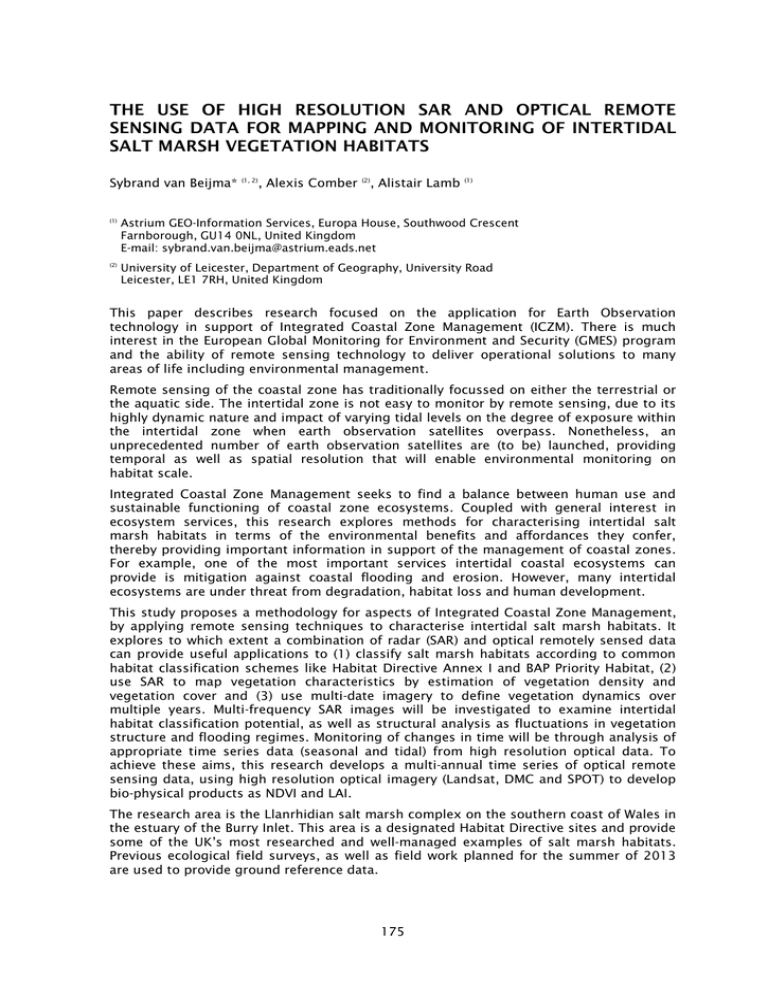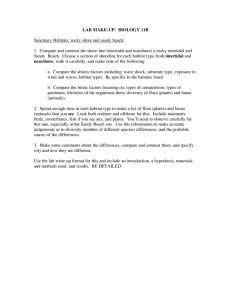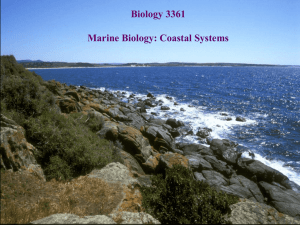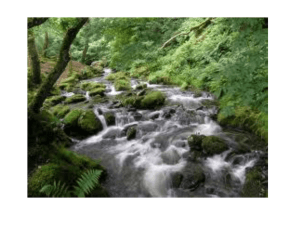THE USE OF HIGH RESOLUTION SAR AND OPTICAL REMOTE
advertisement

THE USE OF HIGH RESOLUTION SAR AND OPTICAL REMOTE SENSING DATA FOR MAPPING AND MONITORING OF INTERTIDAL SALT MARSH VEGETATION HABITATS Sybrand van Beijma* (1, 2) , Alexis Comber (2), Alistair Lamb (1) (1) Astrium GEO-Information Services, Europa House, Southwood Crescent Farnborough, GU14 0NL, United Kingdom E-mail: sybrand.van.beijma@astrium.eads.net (2) University of Leicester, Department of Geography, University Road Leicester, LE1 7RH, United Kingdom This paper describes research focused on the application for Earth Observation technology in support of Integrated Coastal Zone Management (ICZM). There is much interest in the European Global Monitoring for Environment and Security (GMES) program and the ability of remote sensing technology to deliver operational solutions to many areas of life including environmental management. Remote sensing of the coastal zone has traditionally focussed on either the terrestrial or the aquatic side. The intertidal zone is not easy to monitor by remote sensing, due to its highly dynamic nature and impact of varying tidal levels on the degree of exposure within the intertidal zone when earth observation satellites overpass. Nonetheless, an unprecedented number of earth observation satellites are (to be) launched, providing temporal as well as spatial resolution that will enable environmental monitoring on habitat scale. Integrated Coastal Zone Management seeks to find a balance between human use and sustainable functioning of coastal zone ecosystems. Coupled with general interest in ecosystem services, this research explores methods for characterising intertidal salt marsh habitats in terms of the environmental benefits and affordances they confer, thereby providing important information in support of the management of coastal zones. For example, one of the most important services intertidal coastal ecosystems can provide is mitigation against coastal flooding and erosion. However, many intertidal ecosystems are under threat from degradation, habitat loss and human development. This study proposes a methodology for aspects of Integrated Coastal Zone Management, by applying remote sensing techniques to characterise intertidal salt marsh habitats. It explores to which extent a combination of radar (SAR) and optical remotely sensed data can provide useful applications to (1) classify salt marsh habitats according to common habitat classification schemes like Habitat Directive Annex I and BAP Priority Habitat, (2) use SAR to map vegetation characteristics by estimation of vegetation density and vegetation cover and (3) use multi-date imagery to define vegetation dynamics over multiple years. Multi-frequency SAR images will be investigated to examine intertidal habitat classification potential, as well as structural analysis as fluctuations in vegetation structure and flooding regimes. Monitoring of changes in time will be through analysis of appropriate time series data (seasonal and tidal) from high resolution optical data. To achieve these aims, this research develops a multi-annual time series of optical remote sensing data, using high resolution optical imagery (Landsat, DMC and SPOT) to develop bio-physical products as NDVI and LAI. The research area is the Llanrhidian salt marsh complex on the southern coast of Wales in the estuary of the Burry Inlet. This area is a designated Habitat Directive sites and provide some of the UK’s most researched and well-managed examples of salt marsh habitats. Previous ecological field surveys, as well as field work planned for the summer of 2013 are used to provide ground reference data. 175 This research seeks to improve understanding of the impact of external fluxes such as erosion and sea level rise on habitat dynamics. The combination of a multi-sensor and multi-temporal remote sensing approach gives more insights into long-term dynamics of intertidal land cover and ecosystem functions associated with intertidal habitats and ecosystem services they provide. References van Beijma, S. J., A. Comber and A. Lamb. 2012. Temporal analysis of optical and SAR remote sensing for monitoring of intertidal salt marshes. Poster presented at: 1st EARSeL Workshop on Temporal Analysis of Satellite Images. Mykonos, Greece. van Beijma, S. J., A. Comber and A. Lamb. 2012. Temporal analysis of optical and SAR remote sensing for monitoring of intertidal salt marshes. Poster presented at: RSPSoc 2012. Greenwich, UK. 176






